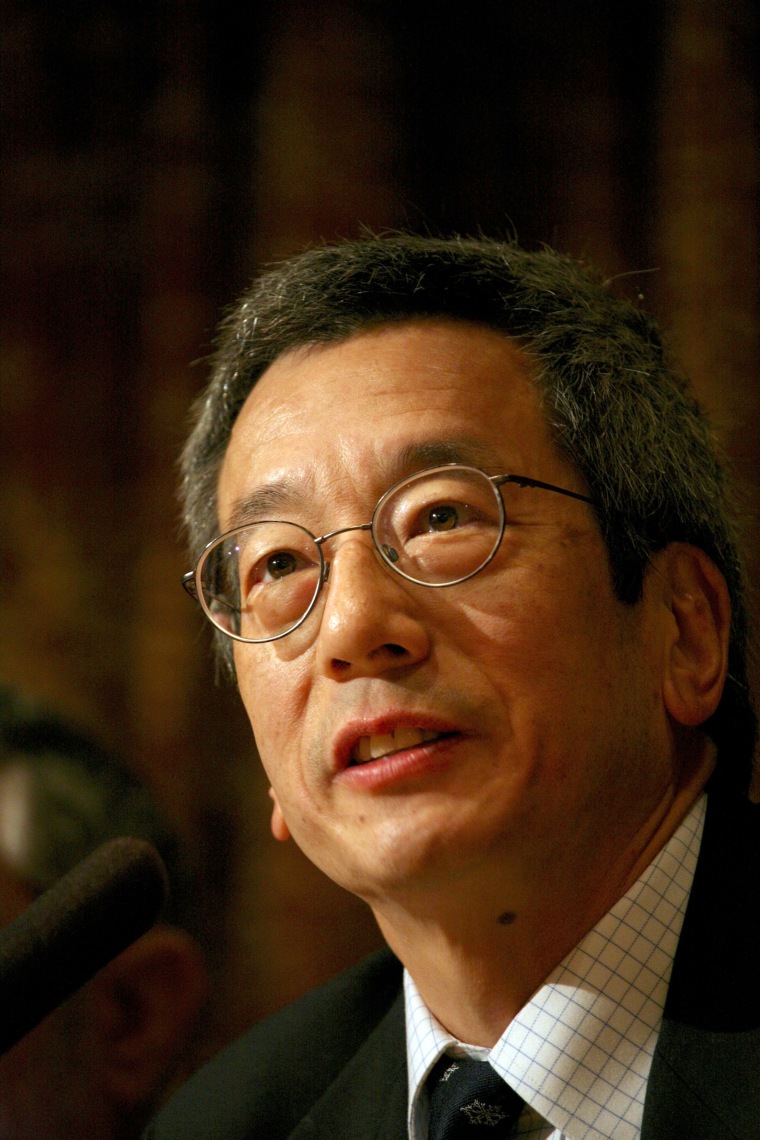SAN DIEGO — Roger Tsien, a University of California, San Diego professor who shared the 2008 Nobel Prize in chemistry for helping develop fluorescent markers that could tag cancer cells or track the advance of Alzheimer's disease in the brain, has died. He was 64.

Tsien died on Aug. 24 in Eugene, Oregon, according to a statement Wednesday from the university.
UC San Diego Chancellor Pradeep Khosla said that Tsien apparently died while on a bike trail, the San Diego Union-Tribune reported, but the cause of death had not been determined.
"Roger was an extraordinary man: kind, generous, gracious, and always the consummate scientist pushing the limits of his work to expand the possibilities of science," Khosla said. "He was a rare talent we cannot replace."
Tsien was a professor of pharmacology, chemistry and biochemistry at UC San Diego's School of Medicine for 27 years.
In 2008, he shared the Nobel with Osamu Shimomura and Martin Chalfie for helping turn green fluorescent protein from a jellyfish into a research tool that could literally illuminate everything from brain cells to bacteria.
Tsien helped create markers that, under ultraviolet light, glow in a wide variety of colors. Researchers use the markers to track cellular processes.
"He was ahead of us all. He was ever the adventurer, the pathfinder, the free and soaring spirit. Courage, determination, creativity and resourcefulness were hallmarks of his character. He accomplished much. He will not be forgotten."
"Our work is often described as building and training molecular spies," Tsien once said, according to the university. "Molecules that will enter a cell or organism and report back to us what the conditions are, what's going on with the biochemistry, while the cell is still alive."
A version that surgeons can use to differentiate cancerous tissue from healthy tissue is currently in development.
"I've always been attracted to colors," Tsien told the Union-Tribune in 2008. "Color helps make the work more interesting and endurable. It helps when things aren't going well. If I had been born colorblind, I probably never would have gone into this."
Born in New York City, Tsien began sketching chemistry experiments when he was 8 years old, according to the university, and earned his first Boy Scout merit badge in chemistry. He took degrees from Harvard and Cambridge.
"He was ahead of us all," Tsien's wife, Wendy, said in the university statement. "He was ever the adventurer, the pathfinder, the free and soaring spirit. Courage, determination, creativity and resourcefulness were hallmarks of his character. He accomplished much. He will not be forgotten."
Follow NBC Asian America on Facebook, Twitter, Instagram, and Tumblr.